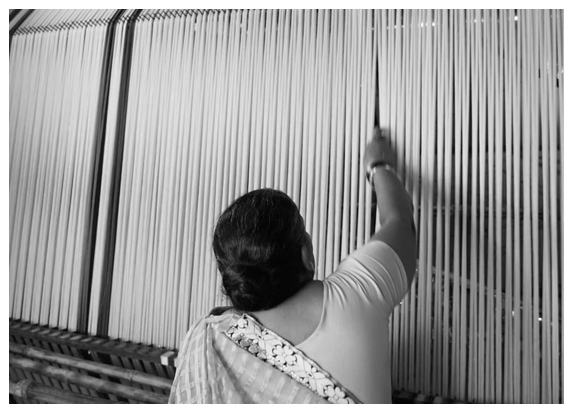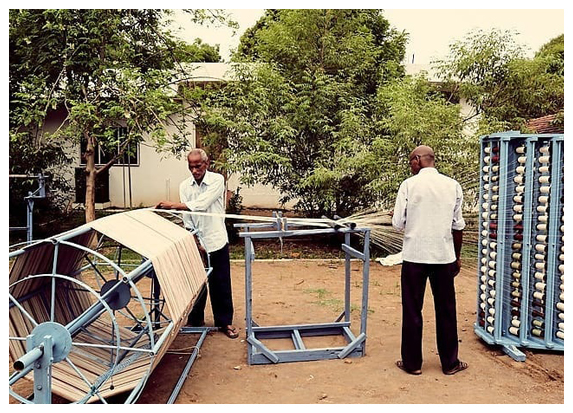The artisanal sector in India is the second largest provider of livelihoods after agriculture. Handloom, beyond its beauty and heritage value and artisanal production, is Eco-friendly, has negligible carbon foot-print and fulfills most of the United Nation’s “Sustainable Developmnt Goals” (SDGs). Handloom provides dignified employment to millions of people in their own location, so that they are not compelled by economic constraints leaving their ancestral professions and migrate to urban slums to earn meager livelihood as unskilled labourers. Handspun and Handwoven fabric uses indigenous fibers and natural materials Handloom addresses two of the most serious challenges that we face today : growing umemployment and Climate Change.

Women working on ambar Charkas earn around Rs.100 to 150 per day. They have to mindlessly rotate the 8 or 12 spindle heavy handle of the ambar charkas for 8 hours a day.
Inspite of a 900 million rural population, development in India has been mostly confined to Urban Areas.
A recent sample census indicates that around 200 million artisans depend on their craft sector for their livelihood. Of this, it is estimated that around 30 million are involved in the handcrafted textiles sector. For the longest time, it is believed that the artisan community would eventually be absorbed by industries. This has not happened and skilled artisans are made to feel redundant as they do not have modern education required by the industries and their traditional wisdom and sophisticated skills are considered irrelevant. The irony of our times is that highly skilled master craftspeople are considered less-productive than machine operators.
Handspinning and Handweaving though is laborious and monotonous, it is a myth that artisans are unwilling to do that laborious work. Many master weavers who want to continue their traditional profession are still having no continuous orders. Many rural women who have free time are willing to spin between their many household chores if they are paid for their effort.
Today handspinning is no more done at homes, but it is done at khadi centres and mostly by women employees.Though this seems inhumane this is the breadwinner for many women
In many handloom hubs which had around 4000 functional looms a few years ago, because of less supportive policies now have come down to less than 100 functional looms.
Cooperative societies supply yarn and the Woven Fabric / Sarees are taken back by the societies for very meager weaving wages. The wages were set by KVIC boards and were not revised for many years. To break away from this oppressive system a few enterprising weavers dare to take the risk of investing in stocks to produce sarees, dupattas and fabrics to sell through exhibitions or directly to retailers and fashion boutiques in urban cities.
With weavers being paid as low as Rs.80 a day, most of the men migrate to nearby cities to dwell in the slums and work as unskilled labours in the cities.
Women very readily take up handiwork or supportive weaving work, where they can earn as much as as Rs.2500 a month, which they feel is very precious as this supports them run their family, pay for their children’s education or betterment of their lives.
Today handloom has largely involved rural women, it is a fact to tell, they are the backbone of handloom and handicraft.
Handloom can initiate several positive changes by providing much needed jobs without huge investments, helps to empower women and marginalized communities involved in this field of work.

In India making Fabric is not a Hobby but a livelihood.